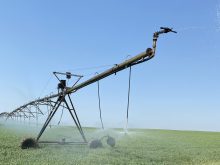Food inflation is beginning to show up in Canadian grocery stores.
Statistics Canada says price increases for food have outpaced Canada’s overall inflation rate during the past year, rising 3.7 percent compared to an overall consumer price index increase of 3.3 percent.
The price increase has been particularly pronounced in meat and bakery products, while vegetable prices tumbled almost eight percent in April and dairy prices were down one percent to temper the food price index.
In a recent analysis, Kevin Grier from the George Morris Centre in Guelph, Ont., said higher food prices normally mean higher profits for retailers who sell the food.
Read Also

Saskatchewan RM declines feedlot application, cites bylaws
Already facing some community pushback, a proposed 2,000-head cattle feedlot south of Swift Current, Sask., has been rejected for a municipal permit, partly over zoning concerns about the minimum distance from a residence.
“There is an old food industry adage that inflation is good for grocers,” he wrote. “In particular, the thought is that inflation is good for grocery margins.”
The argument is based on the assumption that margins are a percentage of gross revenues, which means higher revenues from higher prices translate into higher profits.
However, Grier said the assumption may not hold in current retail market conditions. Statistics suggest retailer margins are more volatile than food price swings, depending on competition, costs and other factors.
Increased competition in the food retail sector, particularly from recent entrants such as Walmart, Canadian Tire, Shoppers Drug Mart and the Dollar Store chain, means consumers have choices.
Grier argued that higher food prices caused in part by higher produce costs could cut into grocer profits because consumers tend to flock to stores where prices are lower.
“In this case, passing along cost increases is increasingly difficult or not possible,” he wrote. “Canadian grocers could find that now an inflationary environment could actually harm margins. That would be because they cannot pass along manufacturer increases.”
Grier said consumer buying habits will determine if higher food prices shrink retailer profits.
“The basic message is that the consumer is going to decide whether inflation is good for grocer margins or not.”
He said economic uncertainty is also making consumers more cautious in their spending habits as they worry about how to balance the books.
“High unemployment, soaring gas prices and general uncertainty are keeping us all a little more tight-fisted.”
Overall inflation does not necessarily affect the food sector because food represents 17 percent of the consumer price index calculation, Grier said.
“The bottom line is that just because there is inflation or price stability in the overall economy, it does not translate into the same condition in the grocery store.”
Increased retail food prices do not necessarily translate into higher farmgate returns, according to a 2008 analysis published by Statistics Canada. Meat and dairy producers typically receive close to 15 percent of market revenues in their sector, with supply management the main reason for that higher percentage.
The farmer share is far less in the grain and fruit and vegetable sectors.














